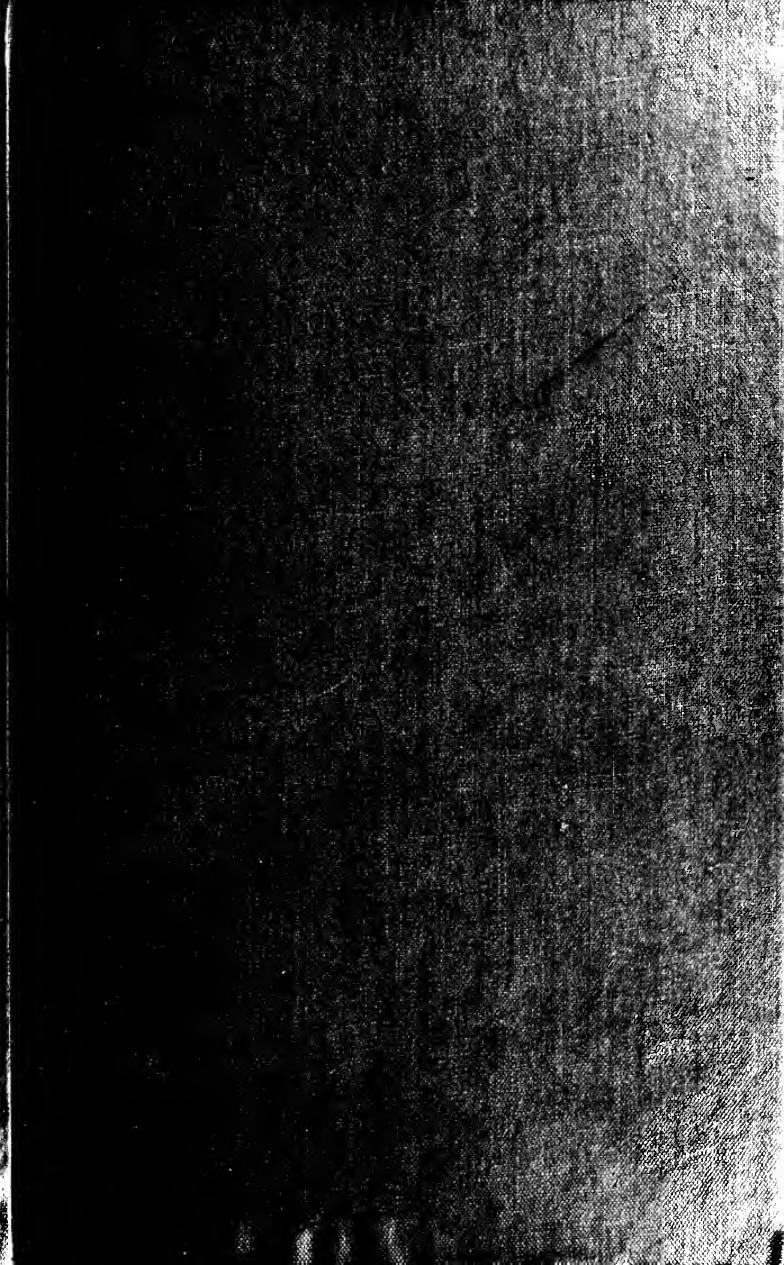Steam-engine theory and practice by Ripper William 1853-1937

Author:Ripper, William, 1853-1937
Language: eng
Format: epub, pdf
Tags: Steam-engines
Publisher: London, New York [etc.] : Longmans, Green and co.
Published: 1922-03-25T05:00:00+00:00
Fig. 286 is drawn with the data here given, lengths A and C being set off to scale equal to 69'9 and 4:4'5 at the beginning and end of the stroke respectively, and the point B is found, as already explained, by finding geometrically the position of the piston when the crank and connecting-rod are at right angles. A free curve of inertia is then drawn, and the diagram of net effective pressure on the piston is set off, as shown by dotted lines, by measuring from the inertia curve'to the top line of the indicator diagram (see Fig. 279), and resolving the pressure as shown to find its tangential effect on the crank-pin.
Thus, if the net pressure 6, measured from the base line to the corrected indicator diagram, shown dotted, be set off on the corresponding crank position as shown, and the vertical component a, intercepted by the connecting-rod, be set off on the crank position produced, then, by joining the outer extremities of the lines a, the curve of turning effort on the crank-pin is obtained.
It may here be pointed out that though the force absorbed in accelerating the moving parts is restored during retardation of those parts, yet in practice there will be a waste of energy to a greater or less degree at the end of each stroke, if owing to slack bearings there is a " pound " or shock as the crank turns the centre and the moving parts change the direction of motion. With slack main bearings, the crank-shaft may be lifted on the up-stroke, and possibly bent or sprung on the down-stroke. To avoid such effects, the brasses should be kept in good condition, having a, minimum of slackness, and the energy in the piston at each end of the stroke should l^e absorbed by a judicious use of steam-cushioning on the exhaust side, so that the piston may be brought to rest as nearly as possible without shock.
Download
Steam-engine theory and practice by Ripper William 1853-1937.pdf
This site does not store any files on its server. We only index and link to content provided by other sites. Please contact the content providers to delete copyright contents if any and email us, we'll remove relevant links or contents immediately.
Whiskies Galore by Ian Buxton(40494)
Introduction to Aircraft Design (Cambridge Aerospace Series) by John P. Fielding(32345)
Small Unmanned Fixed-wing Aircraft Design by Andrew J. Keane Andras Sobester James P. Scanlan & András Sóbester & James P. Scanlan(32145)
Aircraft Design of WWII: A Sketchbook by Lockheed Aircraft Corporation(31778)
Craft Beer for the Homebrewer by Michael Agnew(17461)
Turbulence by E. J. Noyes(7052)
The Complete Stick Figure Physics Tutorials by Allen Sarah(6645)
The Institute by Stephen King(6285)
Kaplan MCAT General Chemistry Review by Kaplan(6062)
The Thirst by Nesbo Jo(5791)
Bad Blood by John Carreyrou(5779)
Learning SQL by Alan Beaulieu(5420)
Weapons of Math Destruction by Cathy O'Neil(5046)
Permanent Record by Edward Snowden(5006)
Man-made Catastrophes and Risk Information Concealment by Dmitry Chernov & Didier Sornette(4746)
iGen by Jean M. Twenge(4704)
Digital Minimalism by Cal Newport;(4565)
Navigation and Map Reading by K Andrew(4556)
Life 3.0: Being Human in the Age of Artificial Intelligence by Tegmark Max(4518)
